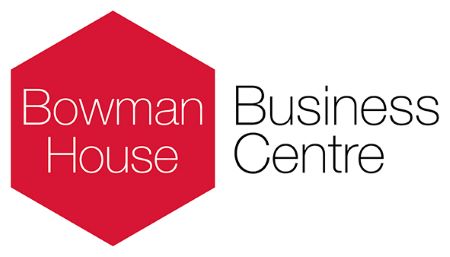In case you missed it see what’s in this section
Let's Talk
Dispelling Food Myths
Personal trainer David Maundrell dispels some common food myths.
Fat
The Myth
Fat is bad for you. As sweeping statements go, this is one of the biggest. For a long time, fat, and in particular saturated fat, has been the target of food companies, the government and the health system, and is the "go to" reason for the poor state of our health today.
About
In reality, fat is absolutely necessary within a healthy balanced diet. Amongst other things, fats are used to transport and store the fat soluble vitamins A, D, E and K. They constitute the majority of the central nervous system and spinal cord and are important in the synthesis of steroid hormones.
Fats are the subject of intense debate currently and the once lambasted saturated fat is making a stand. Based on research by Mensink and Katan in 1990, it was stated that Trans Fats should be avoided. Trans Fats are commonly found in margarine, biscuits, cakes, crackers, take aways, pies and pastries and many “low fat” processed foods. Within reason, it is better to avoid these types of food.
Top Tip
Use Coconut oil and organic butter. Try not to heat olive oil or flaxseed oil - it is better to use lard, goose fat or coconut oil for roasting your vegetables!
Carbohydrates
The Myth
You need to cut out carbohydrates to lose fat. Carbohydrates are the basic fuel source for us, but as for fats, the type of carbohydrate and how it is used is more important than anything else.
About
One of the main mantras from my training as a PT was “fat burns in a carbohydrate flame” in other words, without some carbohydrate intake, fat burning efforts will be short lived at best.
I generally recommend a Low Glycemic Index (G.I.) approach to my carbohydrates. Essentially this is a measure of how quickly the carbohydrate in food is released into the blood stream. This in turn effects the insulin response from the pancreas and how that then effects how the excess is stored within the body.
High GI foods will cause a spike in insulin that in turn promotes the increased lay down of fatty tissue. IT also leads to the “tried and hungry” feeling that you get an hour or so after eating - the spike in insulin rapidly removes the sugar from the bloodstream, prompting the body to want more sugar - starting a yo-yo effect on blood sugar levels.
Top Tip
when plating up a meal, have one less portion of potato and replace it with more green veg or extra meat.
Juice
Myth
Drinking fruit juice contributes to your “5-a-day”. The “5-a-day” has been in the news in the last 6 months, with some suggesting it should be “7-a-day” or more.
About
First of all, it begs the question “how much is 1?” and secondly, some might be mislead by the benefits of fruit juice, mistakenly thinking that drinking several glasses of juice will satisfy the need for “5-a-day”.
My issue with fruit juice used this way (and to some extent “juicing diets”) is that fruit juice contains a high amount of sugar and much of the fibre content has been removed by the juicing process.
I’m not saying that fruit juice is bad for you, just that if it is relied upon as a means of getting your “5-a-day” you run the risk of taking a large amount of sugar in a liquid form - the result of which is the insulin spike we talked about in myth 2!
Top Tip
Enjoy a glass of juice, but use a small glass and limit it to one or two per day. Even better, eat the fruit raw!
General Food Tips & Recommendations
|
Avoid |
Advise |
|
Low quality meats Battery farmed eggs UHT or processed dairy products Meat pies, pre-packed meals Overcooking meats White sugar, syrups White flour, white (easy cook) rice, white bread, pastries, cakes, biscuits Sweets and confectionary Soft drinks, cordials, cheap fruit juices Margarines, hydrogenated or partially hydrogenated fats Cheap plant oils, especially rapeseed, soybean, corn, sunflower and low calorie oil spray |
Fresh, quality fish, poultry and meat, ideally organic Organ meats – liver, kidney Organic, free range eggs Organic, whole, non-homogenised milk and dairy Slow cook at lower temperatures Wholegrain products Fresh, whole fruit and vegetables Home baking – know what your putting in! Organic butter, lard, goose fat, coconut oil, olive oil and flaxseed oil. Organic seeds and nuts – linseed, pumpkin, cashews, etc. |
Easy Food Swaps
|
Buy Lower GI foods |
Bin Higher GI foods |
|
Sugar-free muesli |
Cornflakes |
|
Wholegrain bread |
White bread |
|
Wholemeal Pitta Bread |
Baguettes and bagels |
|
Fresh apricots |
Apricot puree make with sugar |
|
Under-ripe bananas |
Over-ripe bananas |
|
Oatcakes |
Cookies |
|
Fruit loaf |
Cupcakes |
|
Plain yogurt with fresh berries |
Fruit flavoured yogurts |
|
Wholewheat Spaghetti |
Gnocchi |
|
Sweet Potato |
Baked potato |
|
Oranges |
Orange squash |
|
Grapefruit |
Canned grapefruit in syrup |
|
Fructose |
Sugar |
|
New potatoes |
Mashed potatoes |
|
Fresh tomato salsa |
Tomato ketchup |
|
70% dark chocolate |
Chocolate biscuits |
With a plethora of low fat and low carb diets out there, it can be very confusing, and many people have short term success with these approaches. The best advice is to adopt a sensible approach that fits in with your lifestyle and includes exercise. Simply put, move more, eat better (not less!)
My one easy top tip is simply to use a smaller plate at meal times, and stop when you’re full!
Weather in Swindon
Listings





















